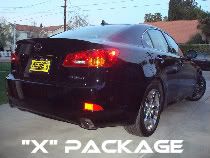mmcdonald wrote:Anywho, most people don't understand the physics.
Well thank you for so eloquently pointing out my ignorance. Perhaps you are familiar with the concept of “black body radiation” in physics?
"...consider how differently different materials absorb radiation. Some, like glass, seem to absorb light hardly at all-the light goes through. For a shiny metallic surface, the light isn't absorbed either, it gets reflected. For a black material like soot, light and heat are almost completely absorbed, and the material gets warm. How can we understand these different behaviors in terms of light as an electromagnetic wave interacting with charges in the material, causing them to oscillate and absorb energy from the radiation? In the case of glass, evidently this doesn't happen, at least not much. A full understanding of how this works needs quantum mechanics, but the general idea is as follows. There are charges-electrons-in glass that are able to oscillate in response to an applied external oscillating electric field, but these charges are tightly bound to atoms, and only oscillate at certain frequencies. It happens that for ordinary glass none of these frequencies correspond to those of visible light, so there is no resonance with a light wave, and hence little energy absorbed. Glass is opaque at some frequencies outside the visible range (in general, both in the infrared and the ultraviolet). These are the frequencies at which the electrical charge distribution in the atoms or bonds can naturally oscillate.
A piece of metal has electrons free to move through the entire solid. This is why metals can conduct electricity. It is also why they are shiny. These unattached electrons oscillate together with large amplitude in response to the electrical field of an incoming light wave. They themselves then radiate electromagnetically, just like a current in an antenna. This radiation from the oscillating electrons is the reflected light. In this situation, little of the incoming radiant energy is absorbed, it is just reradiated, that is, reflected.
Soot, like a metal, will conduct an electric current, although not nearly so well. There are unattached electrons, which can move through the whole solid, but they keep bumping into things-they have a short mean free path. When they bump, they cause vibration, like a pinball machine, so they give up energy into heat. Although the electrons in soot have a short mean free path compared to that in a good metal, they move very freely compared with electrons in atoms, so they can accelerate and pick up energy from the electric field in the light wave. They are therefore effective intermediaries in transferring energy from the light wave into heat.
Heated bodies radiate by processes just like the absorption described above operating in reverse. Thus, for soot heat causes the lattice to vibrate more vigorously, giving energy to the electrons (imagine them as balls in a pinball machine with strongly vibrating barriers, etc.) and since the electrons are charged they radiate away excess kinetic energy. On the other hand, the electrons in a metal have very long mean free paths, the lattice vibrations affect them much less, so they are less effective in radiating away heat.
It is evident from considerations like this that good absorbers of radiation are also good emitters."
(underline added for emphasis)
Quoted source:
http://www.phys.virginia.edu/classes/25 ... ation.html
My example of the black heat sink may have been wrong, but my premise was correct when I stated that "black dissipates (radiates) heat best in the dark".







